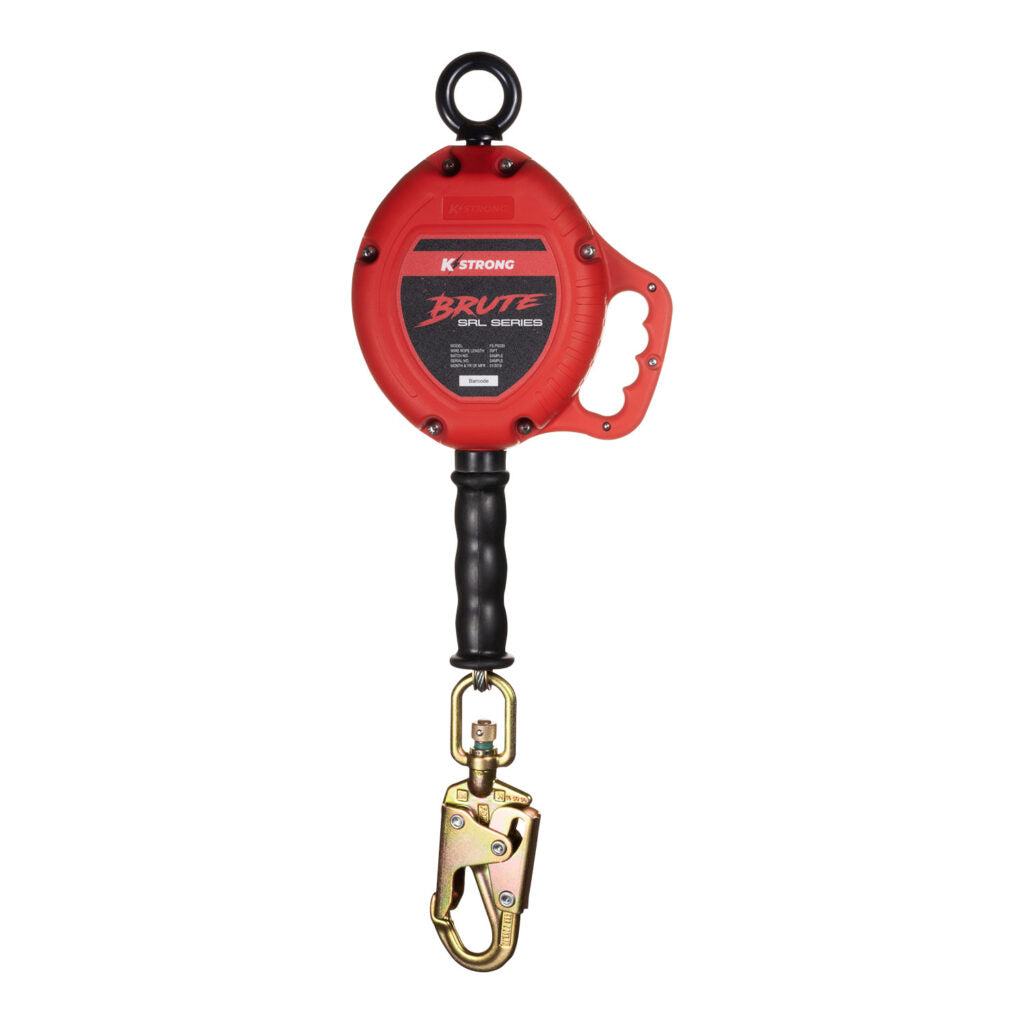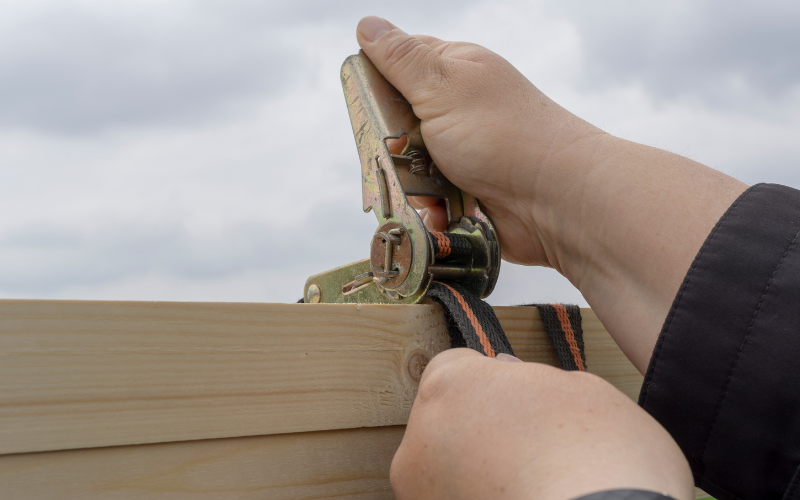Understanding the Purpose of Ratchet Straps
Ratchet straps, or tie-down straps, are among the most dependable tools available for anyone that hauls cargo on a regular basis. As the logistics, transportations, and material handling sectors continue to thrive in 2025, we realize that time-honored ratchet straps play a vital role in a wide range of applications. Be it tying down heavy equipment on a flatbed truck, or strapping down household items on a moving van – ratchet straps keep your cargo in place, prevent expensive damage, and keep costs to a minimum.
How to Choose the Proper Ratchet Strap for the Load
The most important element of ratchet strap selection is ensuring that the working load limit (WLL) and minimum breaking strength exceed that of the cargo being secured. Non-compliant straps will lead to dangerous outcomes, causing damages, accidents, and even fatalities.
Ratchet straps are typically marked by their manufacturers with load ratings. More modern straps may also feature color-coding systems or even digital QR tags to make selection as easy as possible.
The length and width of ratchet straps are also crucial factors in the correct selection. Wider straps have more overall strength and better tension distribution, making them ideal for heavy machinery, pallets, or construction equipment. For lighter loads like boxes, furniture, or tools, narrower ratchet straps might be used.
The hardware at the ends, which could be S-hooks, flat hooks, or chain extensions, should also match your anchor points, whether they hook an anchor point on a trailer rail, D-ring, or E-track system.
Here at Lifting Equipment Store USA, we stock a diverse range of ratchet straps that exceed professional standards for safety and performance with a strap to suit every load and environment.
Correct Method of Adjusting
Correctly using a ratchet strap is just as important as choosing one. If the strap isn't properly threaded or tensioned, it can loosen during transport, which is dangerous on long hauls or when going over speed bumps.
Today, many ratchet straps feature ergonomic improvements and anti-jam mechanisms which enable easier set-up and make them safer in general.
The first thing you should do is to make sure that the webbing strap is routed correctly through the ratchet assembly – flat with no twists. Twisted straps are not only less effective, but over time, with high tension, will cause excessive damage to the fibers.
When ratcheting, one part must be fixed with enough pressure to hold the load and not so much that delicate cargo is damaged, or the shape of structural material is distorted. Close and lock the ratchet handle down to avoid accidental release. Excess strapping should also be secured, eliminating any flapping or tangles - professionals tend to use Velcro wraps, elastic bands, or webbing clips to organize their excess strapping.
It is also important to know how to operate the release mechanism to avoid injury during unloading. By training your team to have a standardized approach to ratchet strap setup and breakdown, you will greatly reduce human error and increase safety overall.
Evaluating & upkeeping your ratchet straps
Inspection and maintenance are important for your ratchet straps to have a long and reliable lifespan. All load-bearing equipment has a life-cycle, and there are challenges, particularly in environments exposed to sunlight, moisture, chemicals or abrasion, that can wear your straps down.
Today, in 2025, with increased safety regulations and awareness, companies are mandated to have their tie-down gear inspected regularly, often before and after every use. Always inspect your ratchet straps for fraying, cuts, burns, or worn stitching in the webbing.
The ratchet mechanism itself should be clear of rust, vegetation, or debris which can restrict the operation or affect tensioning. Some of the more common modern straps come with some sort of coating, but they still require being cleaned and lubricated from time to time to keep them functioning as they should.
If there is any indication that a strap has been compromised, it should be taken out of service immediately.
These days, businesses have moved to digital inventory systems or QR code tagging to keep a record of how straps are used and when they are inspected, aiding in satisfying OSHA and FMCSA requirements.
At Lifting Equipment Store USA, we suggest that at the first noticeable sign of damage, you replace your ratchet straps, and we offer heavy-duty ratchet strap replacements that meet the highest industry standards.
Transport Regulations for Transport Positions
In 2025, enforcement agencies are as laser-focused as ever on ensuring that proper load securement practices are adhered to, as well as the FMCSA (Federal Motor Carrier Safety Administration) and DOT (Department of Transportation).
These regulations outline the minimum number of tie-downs required for a cargo, as well as the placement and configuration of those tie-downs to ensure that the cargo does not shift, tip, or fall during transport. For instance, you'll need at least two tie-downs for cargo over five feet long or weighing more than 1,100 pounds.
There are some specific rules when it comes to carrying other equipment such as automobiles or machines, as well as steel loads where another tie-down must be placed at the rear or there may need to be one or more tie-downs on each body end, and four or more tie-downs when not all of the tension comes from a lateral or where part of it comes from the leeward end.
Breaking these rules can cause costly fines, impounding of your vehicle, and even criminal charges. Commercial operators need to ensure their drivers and warehouse teams are well trained on tie-down standards, while private users moving their household items should check local guidelines to make sure they are carrying their cargo legally and safely. But low compliant does not mean using cheap or nasty ratchet straps because this is the biggest step you can take to stay compliant.
Lifting Equipment Store USA ratchet straps are fully certified and tested and can help you meet the necessary demands with confidence, so all you have to do is to make sure that you use ratchet straps that are ANSI and DOT certified or better.
Take Advantage of Buying Quality and Durability to Get a Long-term Usage
The last consideration, but possibly the most important, is the long-term return on investment of purchasing quality ratchet straps. You might be tempted to buy inexpensive straps for a one-off job – the thought is often, get it for cheap as it’s only getting used once - but in load securing, this should never be the case.
Premium ratchet straps provide higher load ratings, better materials, longer service life, and increased safety. Good, robust polyester webbing can withstand UV, mold, and moisture far better than generic nylon options.
Ratchets are designed to be low friction, minimizing hand strain and will resist jamming or failure in cold conditions. Plus, better stitching and rear reinforcements help to strengthen key areas. Improved ratchet straps reduce equipment failure, downtime, and mental overhead on every haul, so invest in a better one today!
We at Lifting Equipment Store USA offer industrial-grade ratchet straps from the finest manufacturers from around the world, made to carry the weight of the world on them, and promise years of daily use.






















